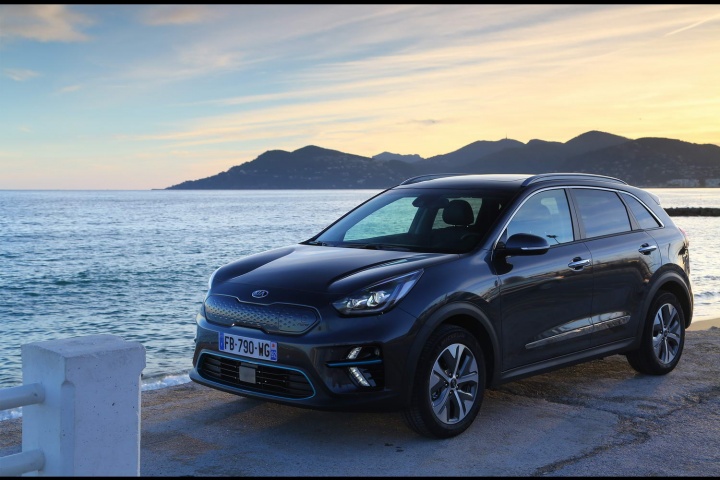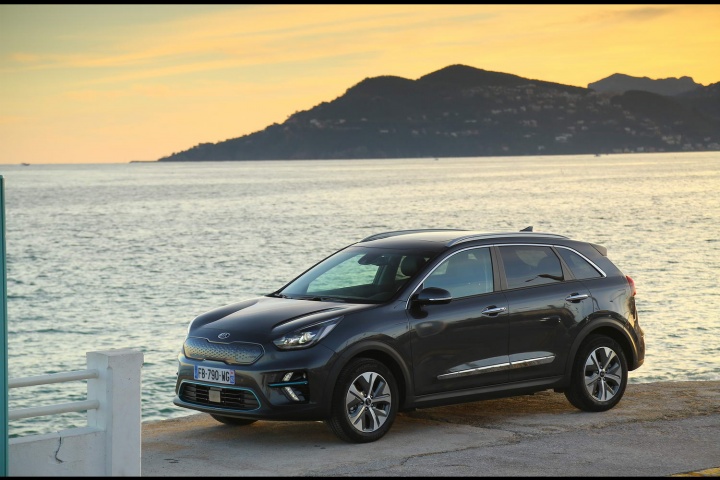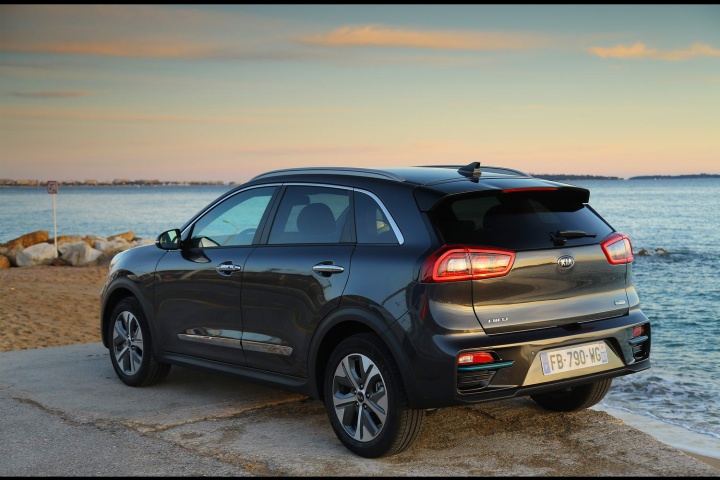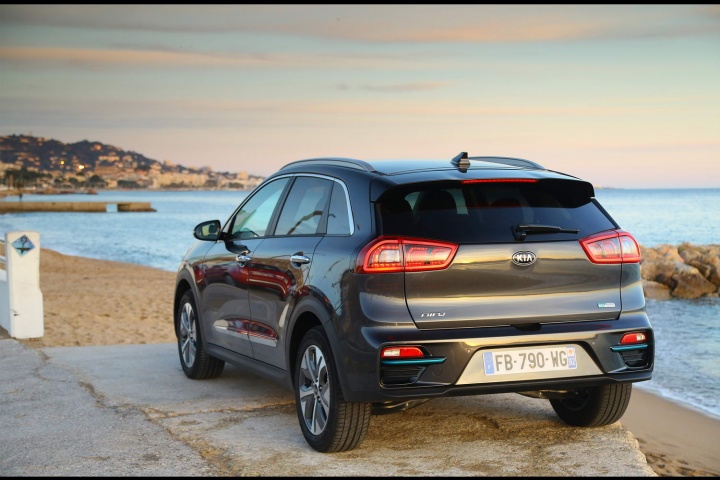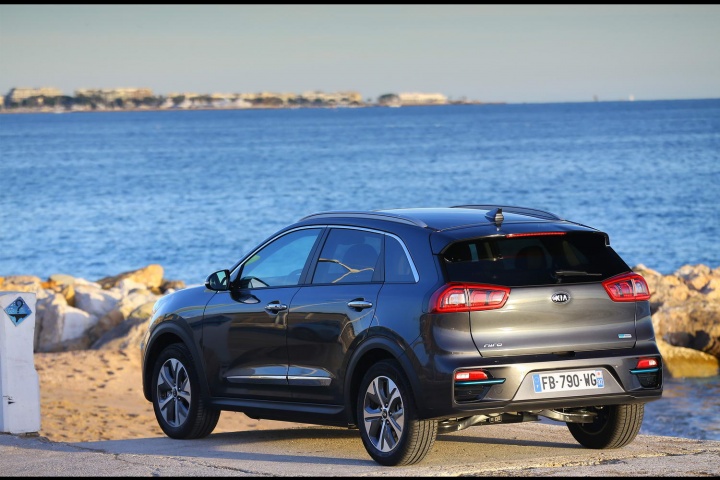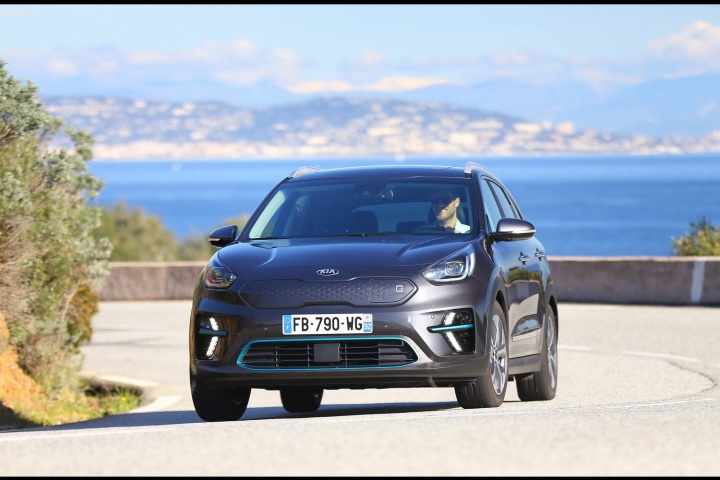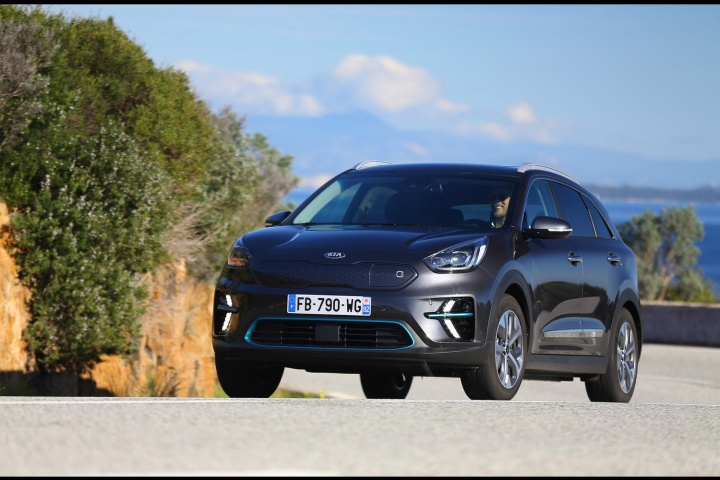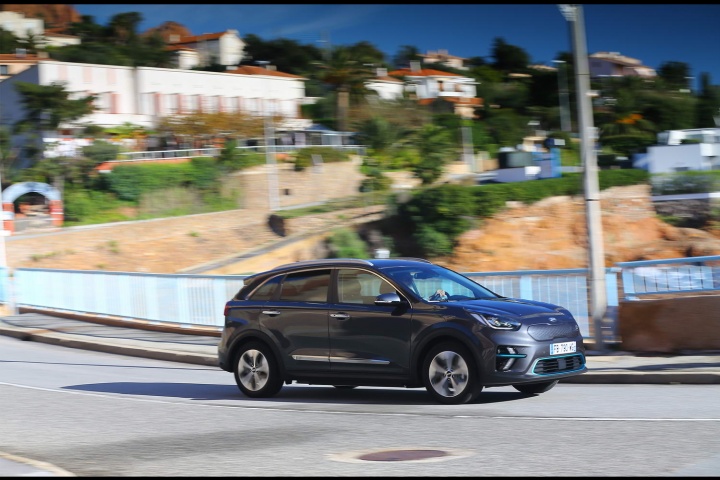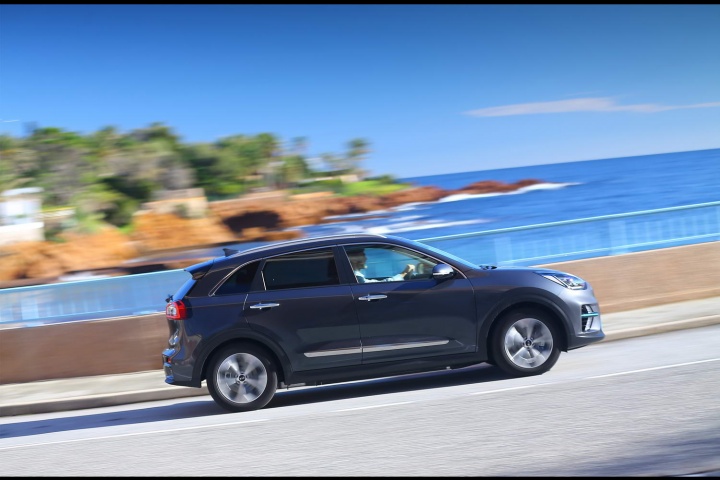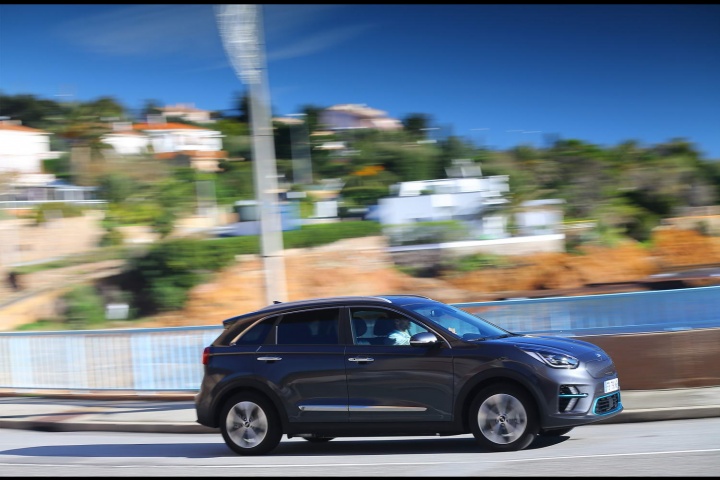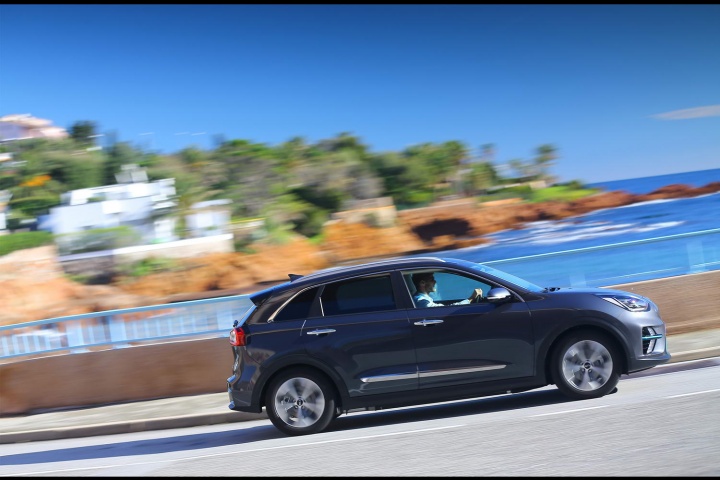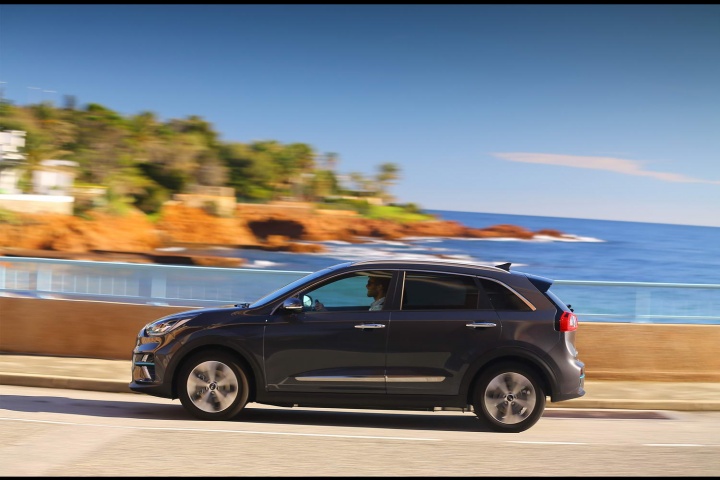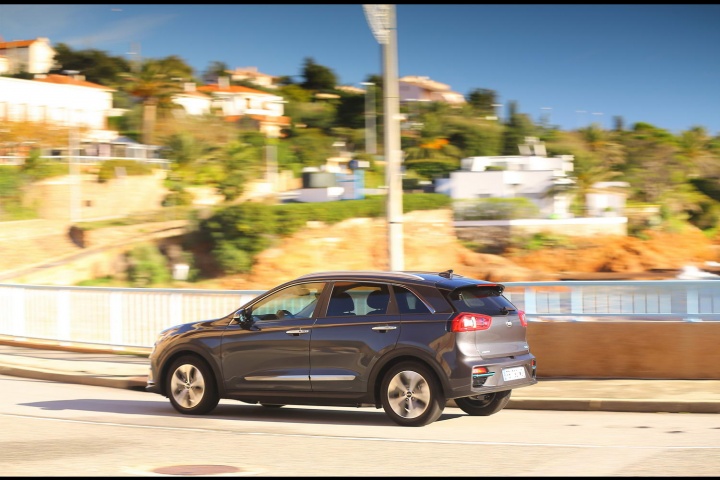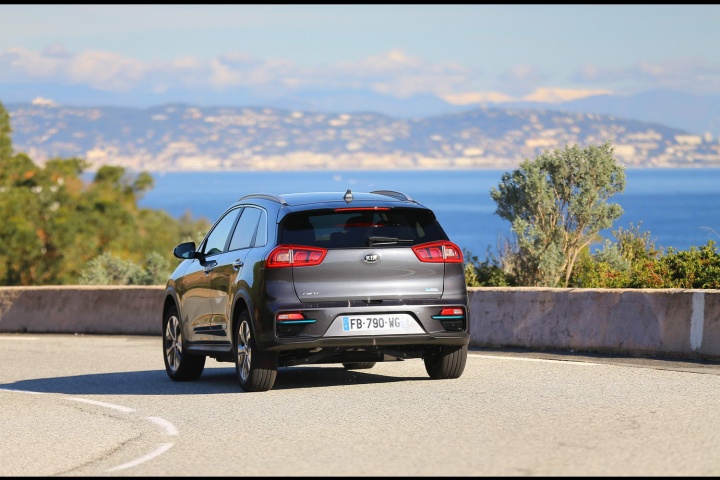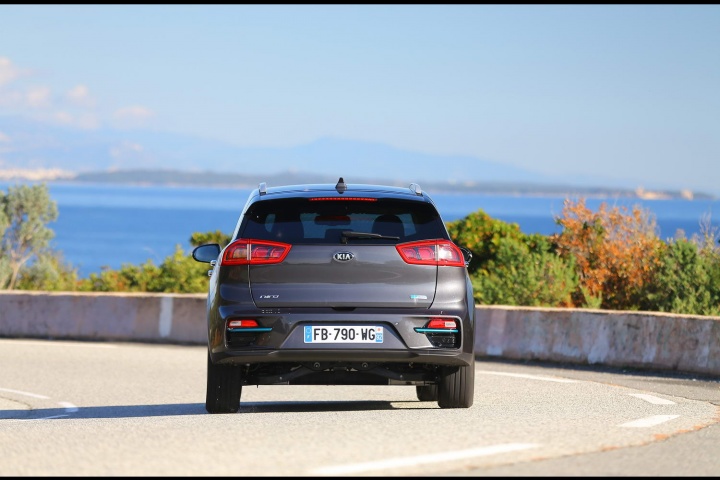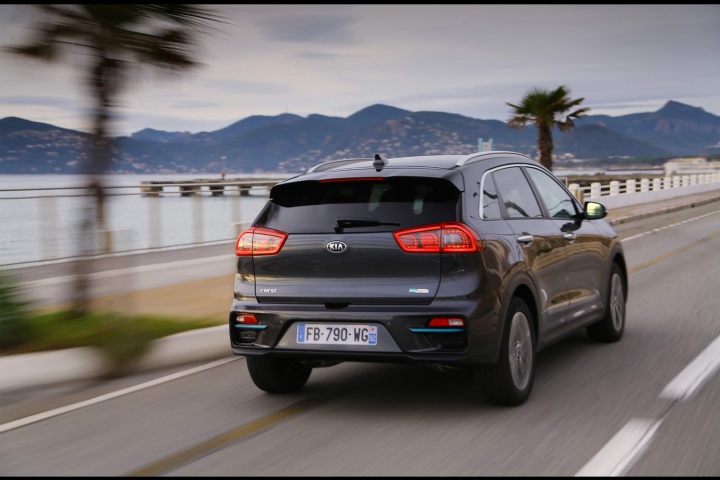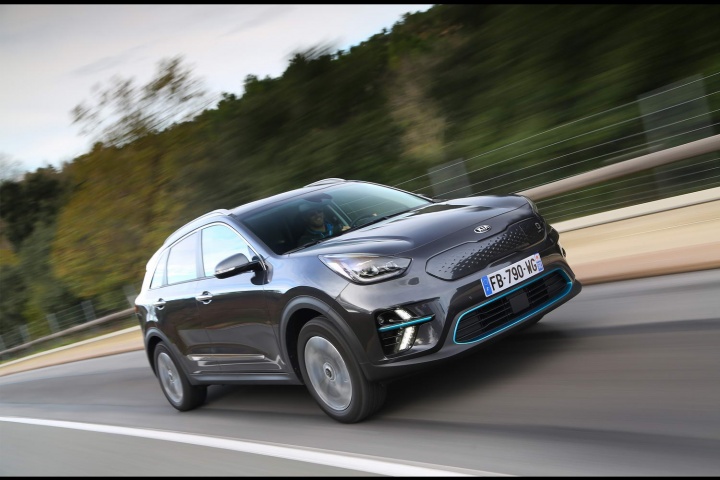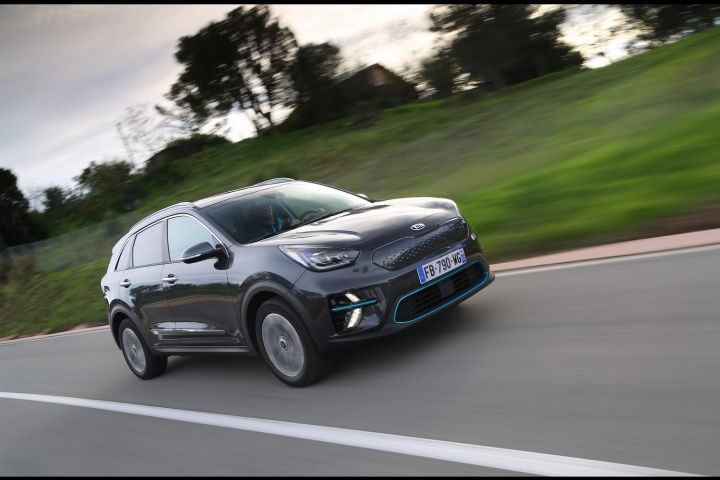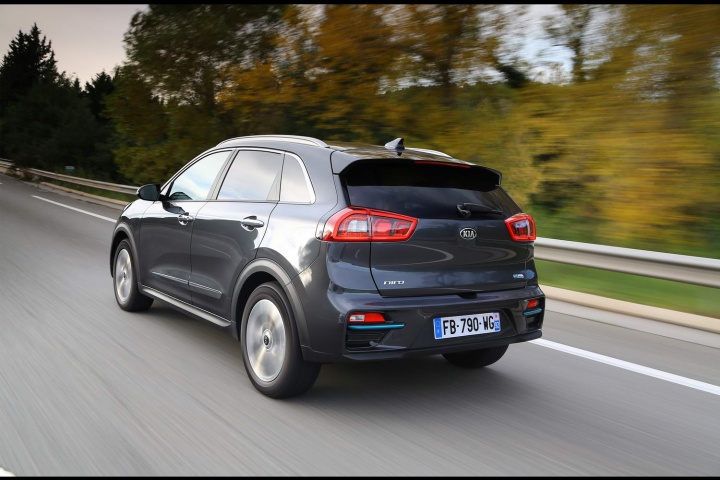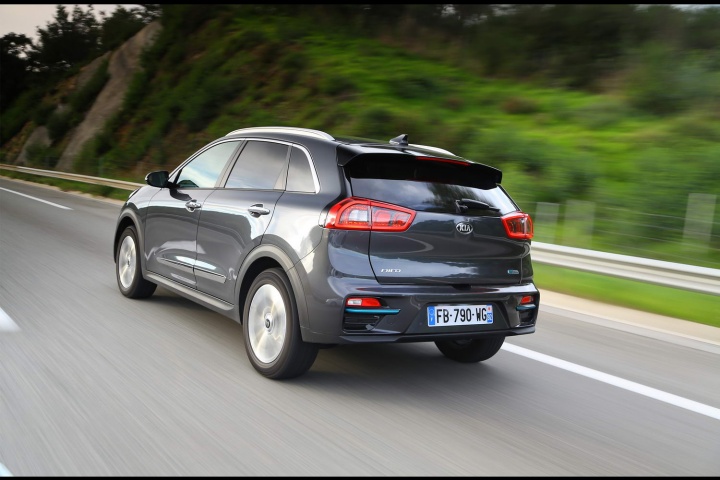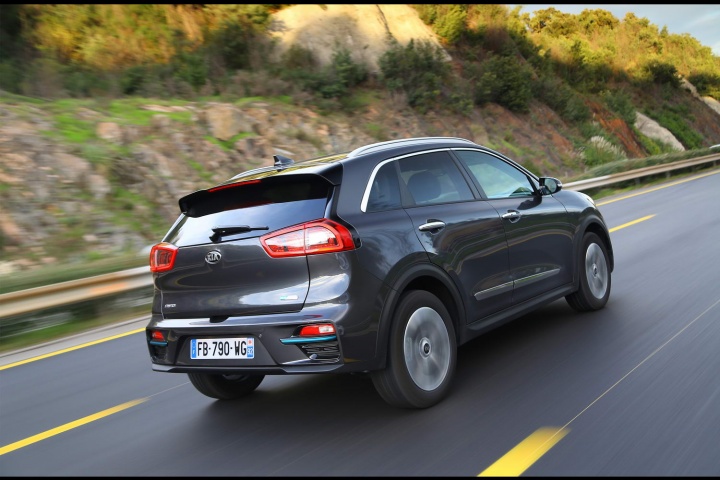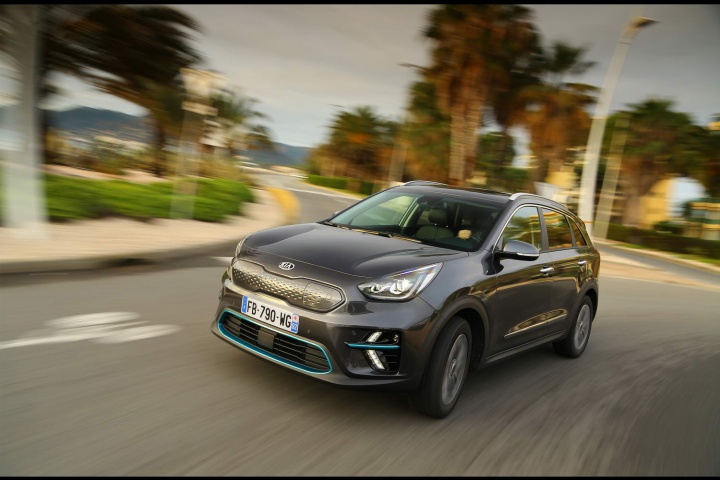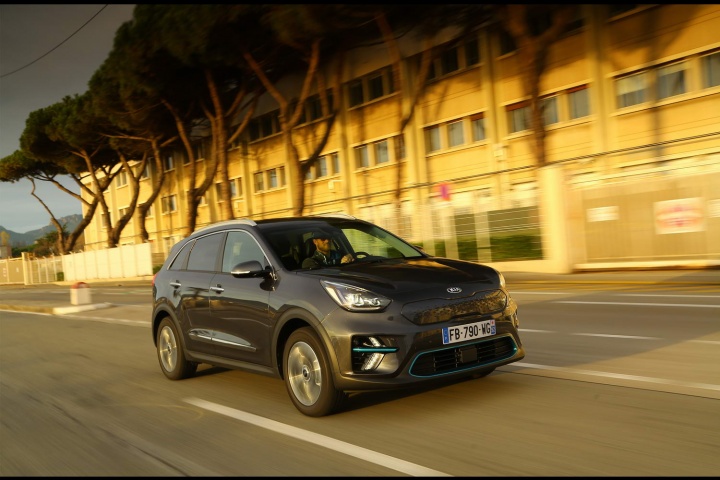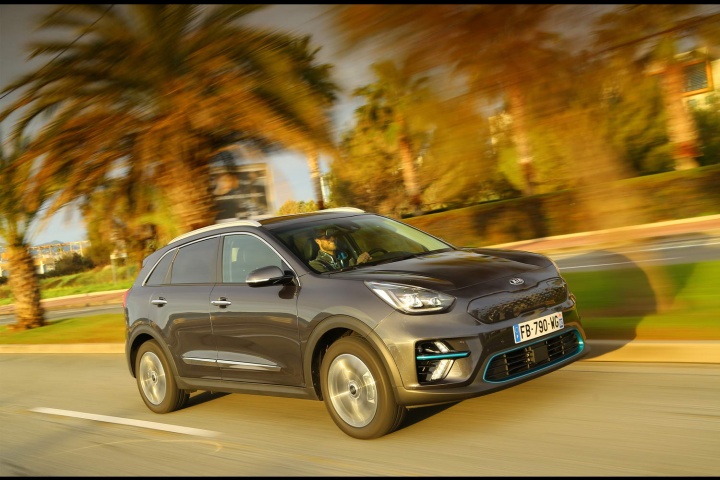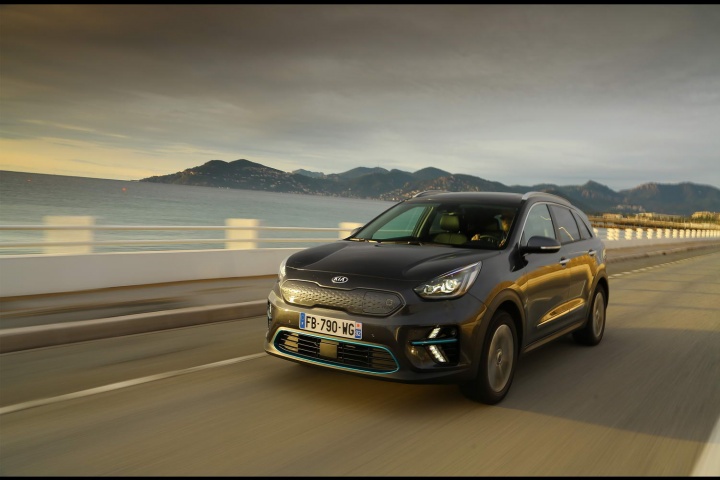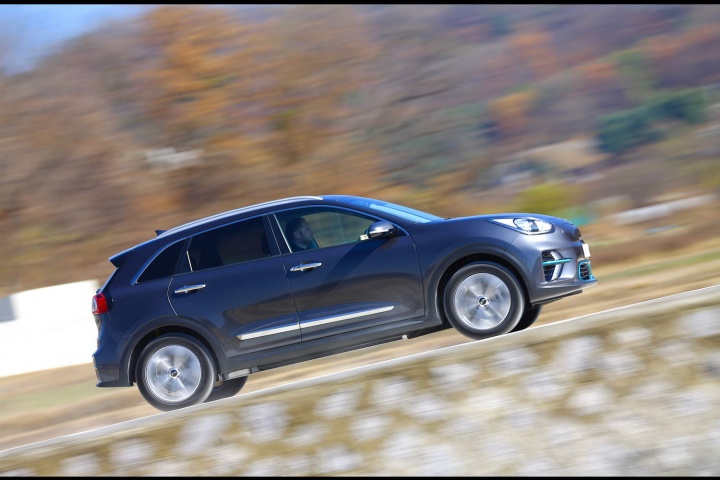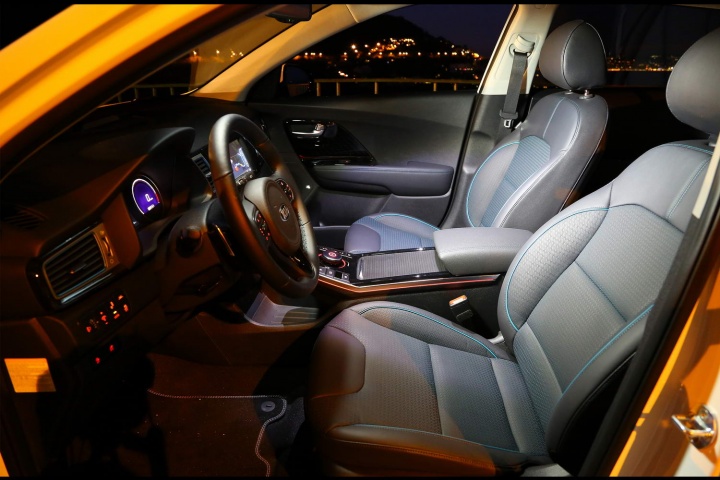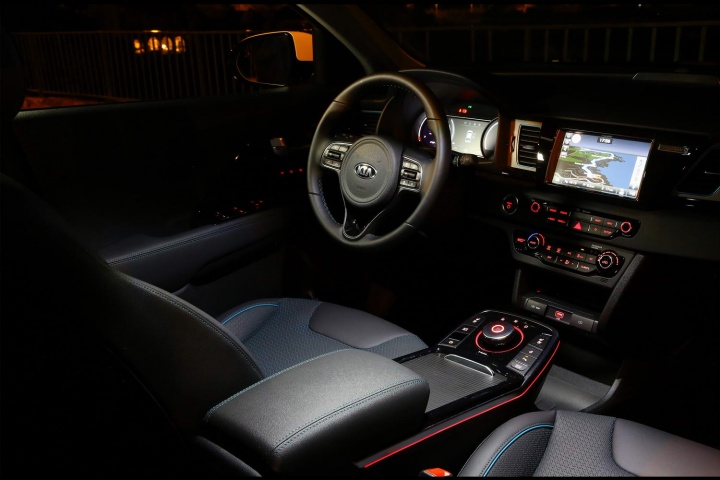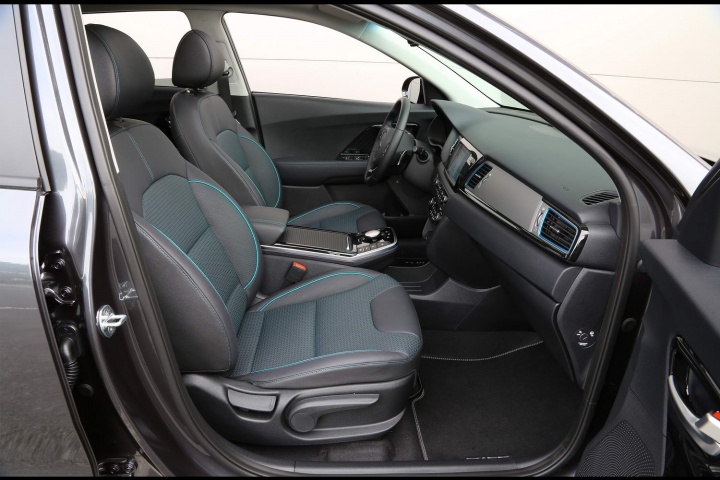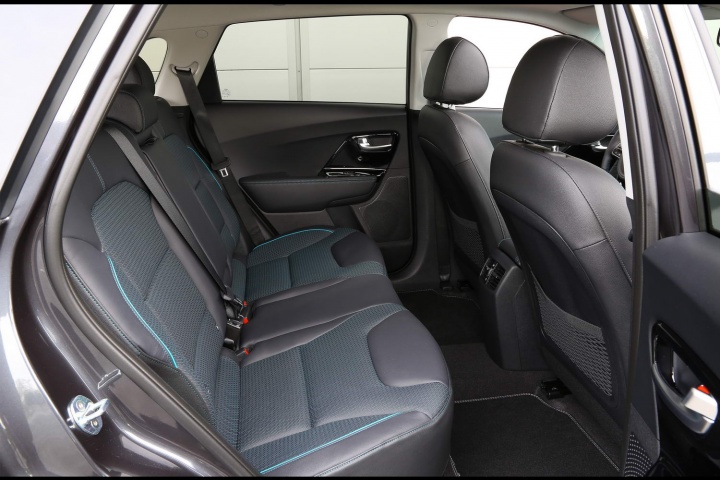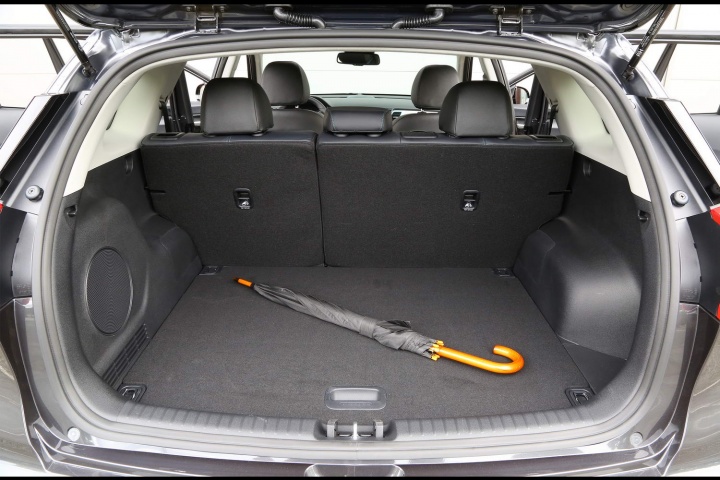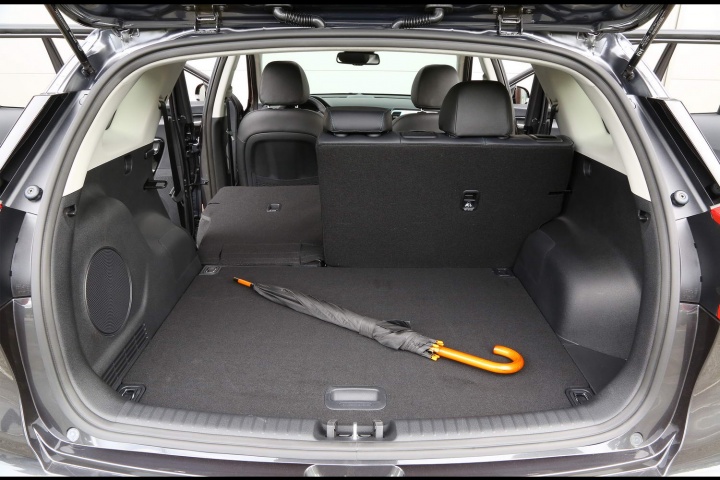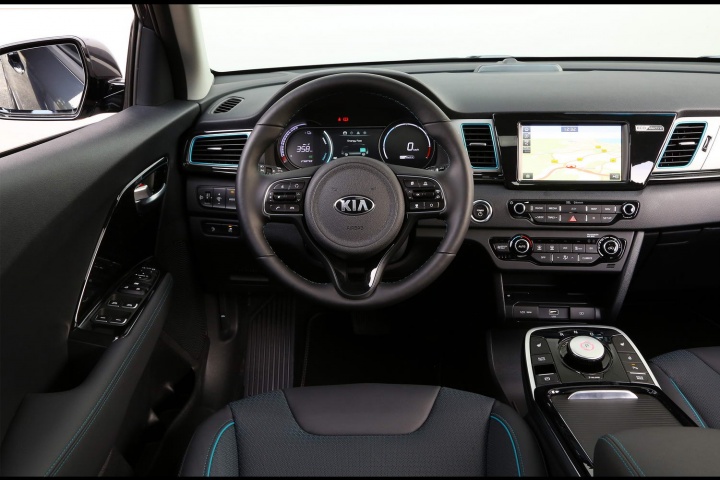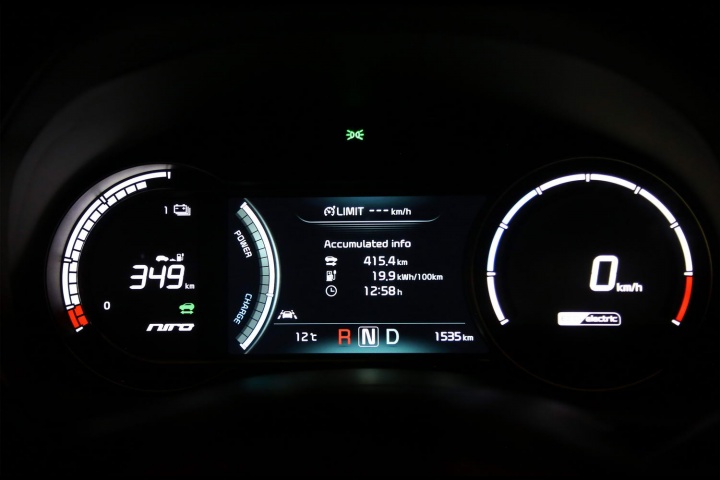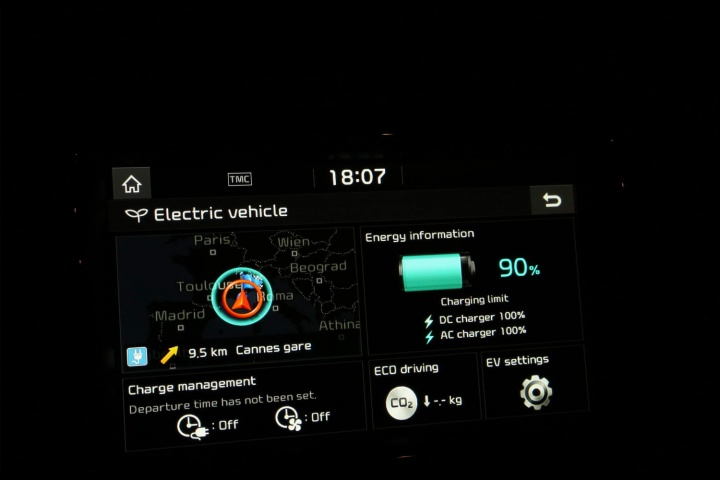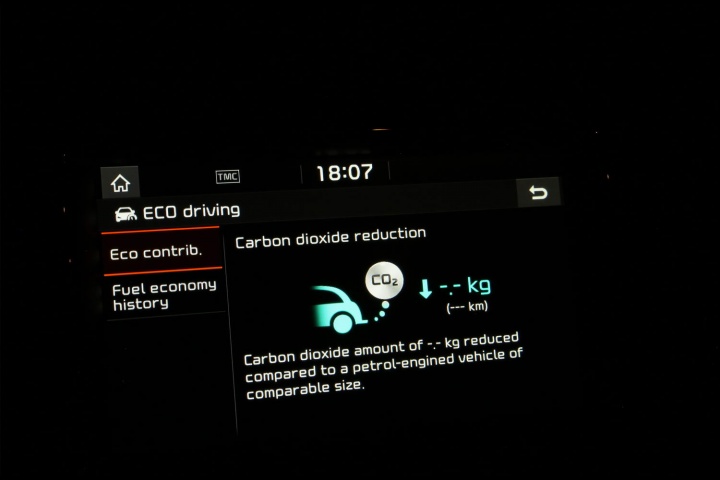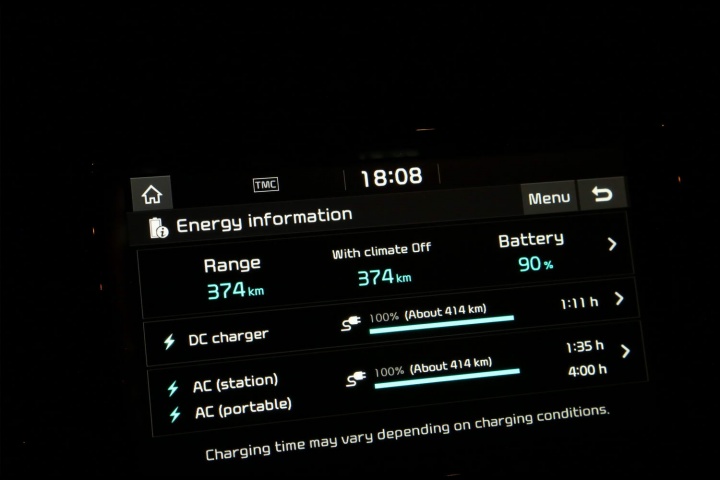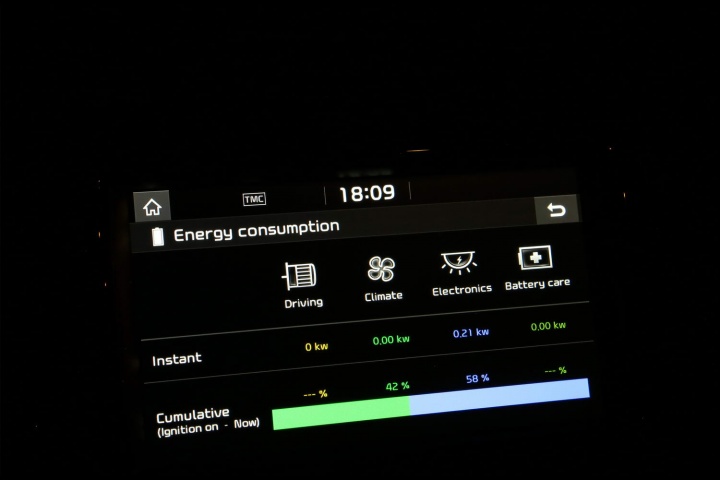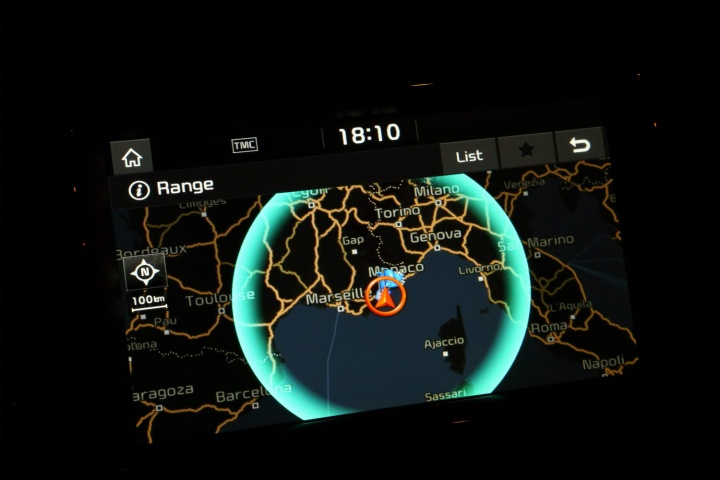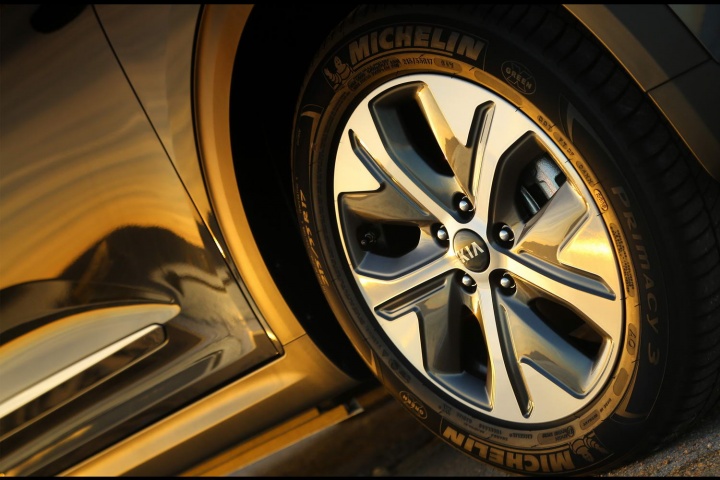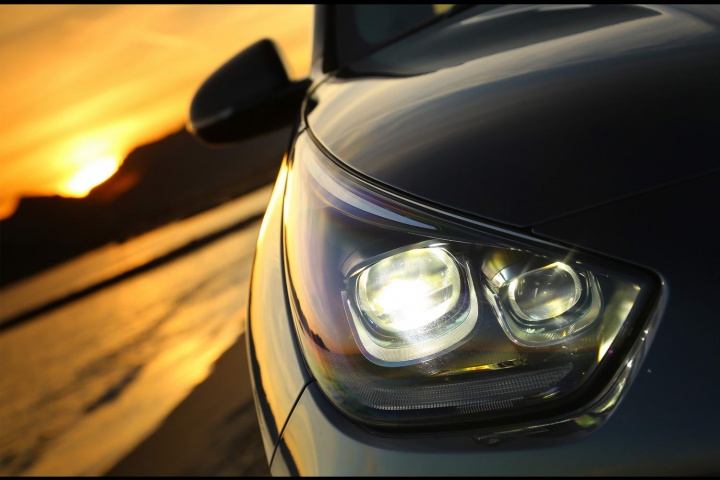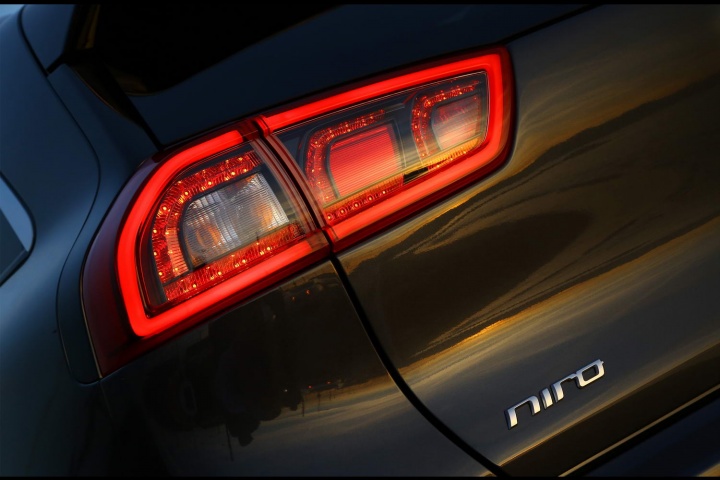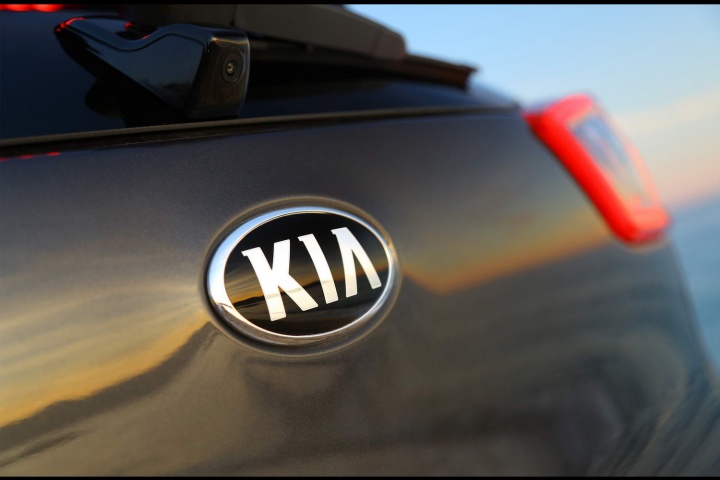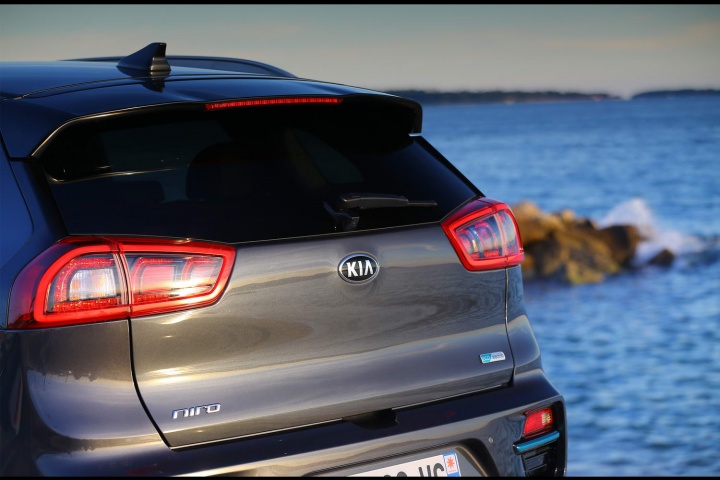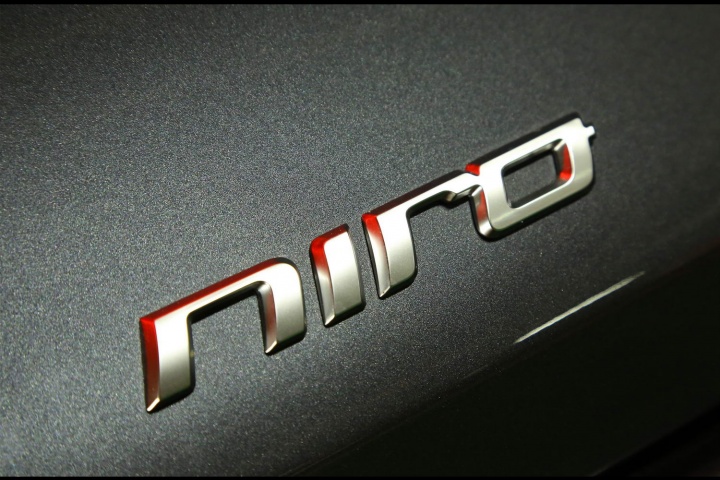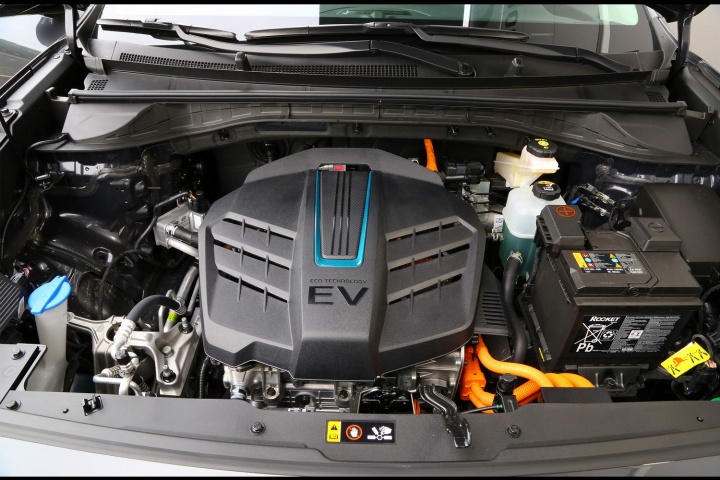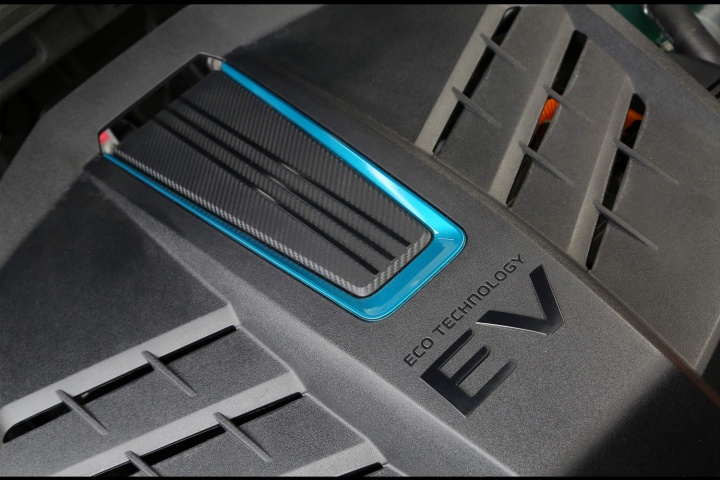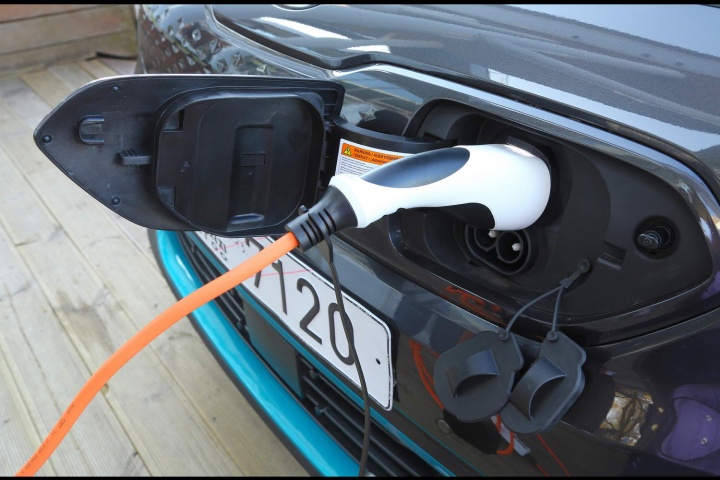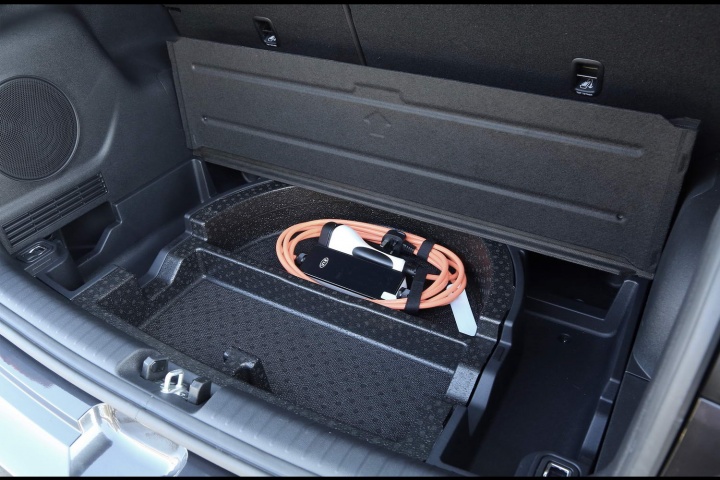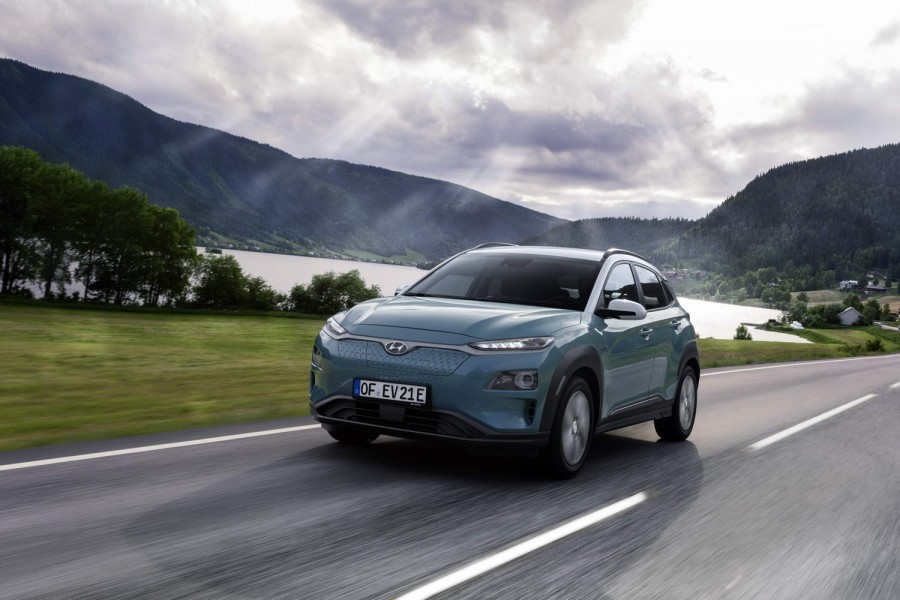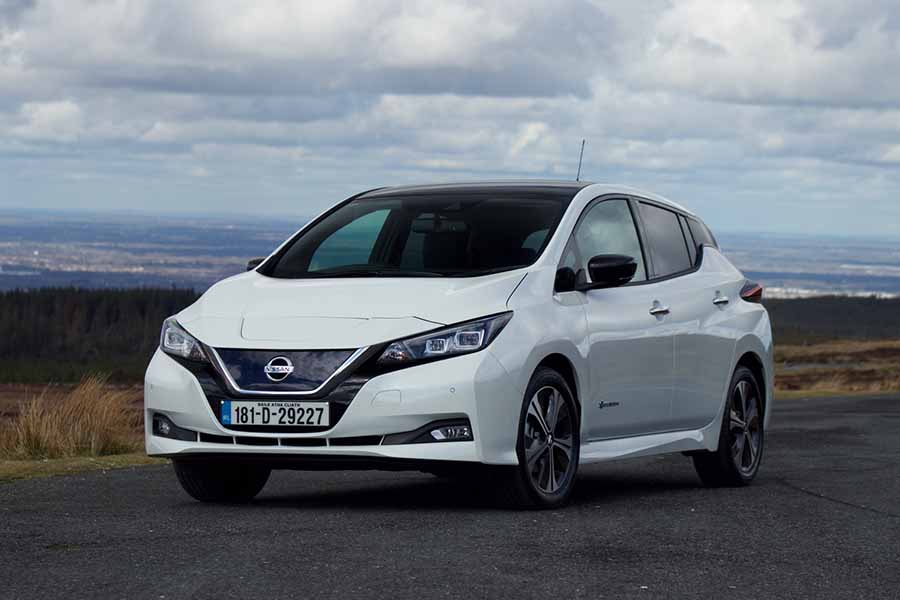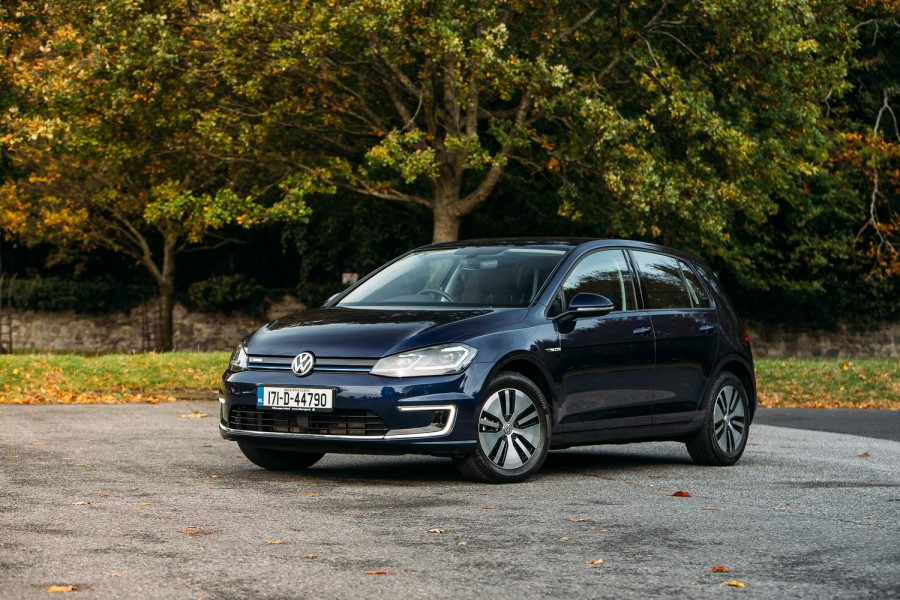Kia's all-battery Niro may be lacking for a sparkling driving experience, but it has a big enough battery to bring Tesla-like range to the mass market.
In the metal
The Kia Niro is one of the more conventional-looking of electric cars, and that's a fact heightened by the familiarity of the shape thanks to the regular hybrid and plug-in hybrid Niro having been on sale for two years already. The e-Niro is distinguished by a blanked-off radiator grille, which also contains the cover for the charging socket, and some turquoise blue highlights scattered around the body. As with the standard Niro, it's not exactly exciting to look at, but you'd never call it ugly either.
The cabin is a little more impressive. The overall shapes and styling are nothing more than workmanlike, but the details impress. The normal gear selector has been replaced by a big rotary switch that probably won't be to all tastes - it's a touch large and slightly awkward to manipulate, but maybe we'll get used to it. In front of the driver is a new, and very clear, all-digital instrument pack, while in the centre is Kia's usual - and very impressive - eight-inch infotainment screen. That combines clear, simple satnav with a menu layout that's easy to use.
Other parts of the interior are more impressive still. There's good space, very good seats (although the driving position is set a touch too high for our tastes) and a very good boot, holding up to 451 litres, which beats the Kia's close cousin, the Hyundai Kona EV. Overall quality is very good, too.
Driving it
Driving the e-Niro is something of a game of two halves; one disappointing, one rather exciting.
The exciting bit is the battery stack and the electric motor. There will be a slightly cheaper, 39kWh battery version of the e-Niro, with shorter range (about 300km) and less power (135hp), but Kia Ireland reckons that this long-range version will be the best-seller. It packs a 204hp electric motor, although both versions get the same 395Nm torque figure. That's enough for solid step-off performance, even in Eco mode. In Sport, power comes in very briskly and smoothly, and there's plenty of it. Stand heavily on the accelerator and the e-Niro moves with no little vim, and of course no noise, which seems to accentuate the performance.
You can adjust the level of brake energy recuperation with the paddles behind the steering wheel. The lowest setting effectively means that the e-Niro sails on unimpeded when you lift off the accelerator, while the highest level is almost at the point of making it a 'one-pedal' car. To complete the picture, if you pull and hold the left-hand paddle, it will use the regenerative braking to bring the car to a complete halt. It's effective, but not as easy to use as the Nissan Leaf's 'e-Pedal' system.
Anyway, that's not the exciting part. The exciting part is that the official range seems to be accurate. Now, that comes with the warning that we didn't get to spend much time on motorways or dual carriageways, so the e-Niro was getting the chance to strut its best stuff. Equally, though, our root was over the foothills of the Alps, with plenty of long uphill stretches, and that's almost as good a way as motorway to test an electric car's ability to preserve its range. Within those limitations (and the fact that the weather was mild and dry) the e-Niro should put at least 400km between charge-ups. We started with a full charge and indicated range of 420km. We returned, 60km later, with indicated range of 380km. That suggests that an average driver could get several days use out of an e-Niro without needing to charge at all, all things being equal.
The disappointing bit is the chassis. The standard hybrid and plug-in Niro are fine to drive - not exciting, but fine. The e-Niro seems, though, to have been given steering that is even more rubbery and lacking in feel than the normal version. It's just a very unsatisfying way to steer a car and robs the driver of any potential enjoyment. Is that a significant point? Perhaps not, and perhaps for most drivers it doesn't make an iota of difference, but Kia knows how to make a car feel good to drive (Ceed, Stinger, Optima) so why not the e-Niro?
Possibly a more serious demerit is the ride quality. To cope with the weight of the battery pack, Kia has been forced to significantly stiffen up the springs and dampers, and the result is an over-firm, rather jiggly ride quality. Given that our test route was on largely well-maintained French roads, that doesn't bode well for Irish conditions.
What you get for your money
The eNiro isn't cheap - €37,495 for the long-range, 64kWh version is a big chunk of change for a Kia - but the bare price doesn't quite tell the whole story. For a kickoff, that's less expensive than its closest competitor, its in-house rival the Hyundai Kona Electric. There's also the option of a more affordable €33,495 eNiro (all these prices include the reductions you get in terms of VRT rebate and the SEAI grant) which has a shorter range, but which can still go for a healthy 289km.
The real value comes, though, when you realise that the 64kWh eNiro's 455km claimed range is actually a realistic one, and that means that it has a significantly superior range to the likes of the Jaguar I-Pace or Audi e-Tron quattro - both of which cost close to three times the price of the Kia.
Standard equipment is good, too, and includes 17-inch alloys, leather upholstery, heated front seats and steering wheel, seven-inch screen featuring Android Auto and Apple CarPlay, and with TomTom Navigation. Standard safety features include lane keeping steering, radar cruise control, forward collision-avoidance assist and autonomous emergency braking.
Actually, the only fly in the eNiro's value ointment is the existence of the new eSoul electric crossover, which is (arguably) better looking, has a nicer interior, and with the 64kWh battery, is priced at a very reasonable €35,995.
Summary
If the Kia e-Niro could be made just a touch sharper to steer, and more comfortable in its ride, I think we'd love it. Even so, along with its Hyundai sister car, it could just be a major game-changer in the electric car world. A useable 400km range on one charge arguably brings electric motoring within the realistic reach of a lot more people. For that alone, the e-Niro deserves your applause - and possibly your own test drive.


